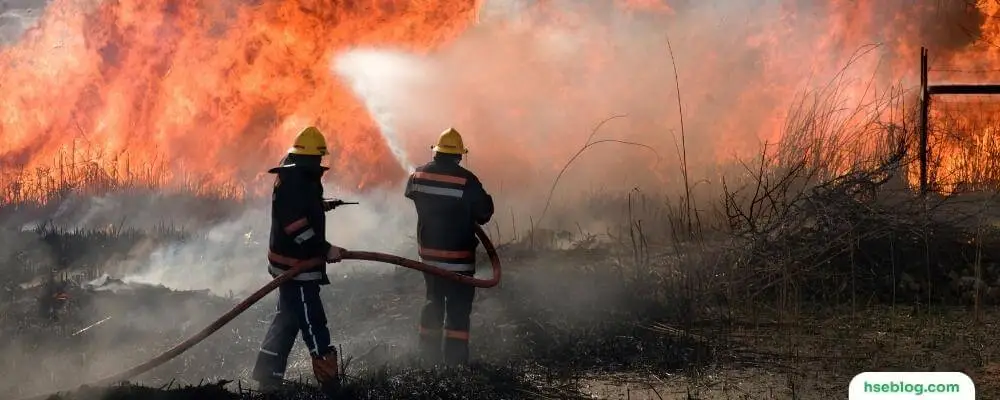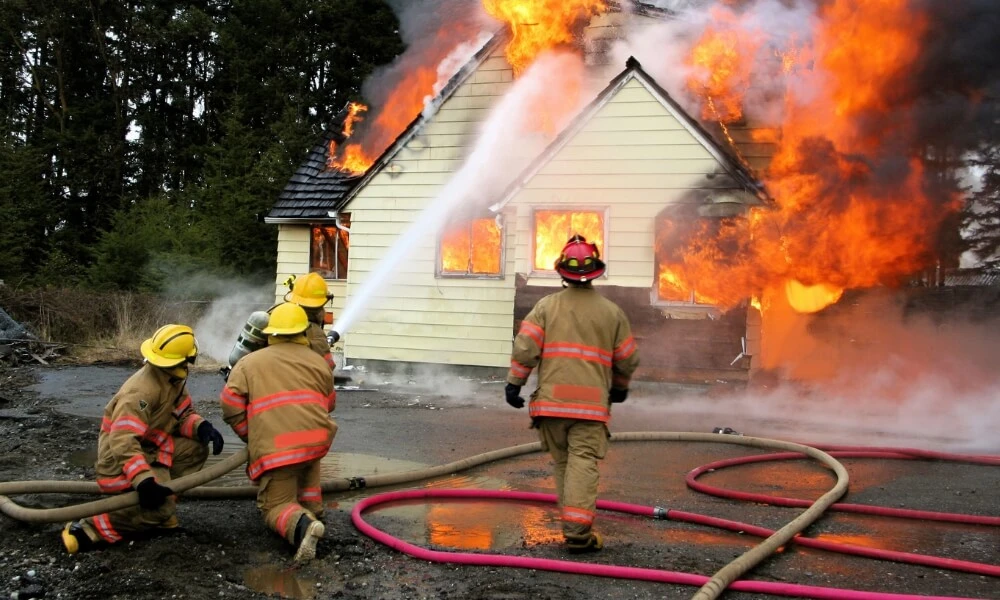Fires can be dangerous and deadly, so knowing when to fight a fire and when not to can be crucial to your safety and those around you. While it might seem obvious that you should always try to extinguish a fire, there are certain situations in which attempting to fight the fire can actually make things worse. In this blog, we will explore the different factors you should consider when deciding whether to fight a fire. By understanding these factors, you will be better equipped to make the right decisions in emergencies and keep yourself and others safe.
Dangers Of Attempting To Extinguish A Fire Without Proper Knowledge
Attempting to extinguish a fire without proper knowledge or training can be extremely dangerous and may result in serious consequences. Here are some of the potential dangers:
- Personal injury: Without proper training, you may not know how to protect yourself from burns, smoke inhalation, and other hazards. This could lead to severe injury or even death.
- Ineffective extinguishing: Improper use of a fire extinguisher or other firefighting methods may not successfully extinguish the fire. This can lead to the fire spreading further and causing more damage.
- Wrong fire extinguisher: Using the wrong fire extinguisher on a particular fire can worsen the situation. For example, using a water extinguisher on an electrical fire can cause electrocution or exacerbate the fire.
- Fire re-ignition: If you don’t fully extinguish the fire, it may reignite and spread. Proper training can help you understand the signs of a fire that has been completely extinguished.
- Smoke and toxic fumes: Smoke and toxic fumes from burning materials can cause respiratory issues, disorientation, and even death. Without proper training, you may not know how to avoid or mitigate the dangers of smoke inhalation.
- Explosion risk: Some fires may involve combustible materials, such as flammable liquids or gases, that can explode if handled improperly. Trained firefighters know how to recognize and deal with these hazards.
- Structural collapse: Fire can weaken the structural integrity of a building, causing it to collapse. Entering a burning building without training puts you at risk of being trapped or injured by falling debris.
- Delays in professional response: Attempting to extinguish a fire yourself can delay the response of professional firefighters, allowing the fire to grow and cause more damage.
- Legal consequences: If your actions lead to further damage or injury, you could face legal repercussions for negligence or improper action.
- Emotional trauma: Encountering a dangerous fire situation without proper training can be traumatic, causing long-term psychological effects.
It’s essential to leave the firefighting to trained professionals. In case of a fire, your priority should be to alert the fire department, evacuate the area, and ensure the safety of yourself and others. Only attempt to extinguish a fire if you have the proper knowledge, training, and equipment to do so safely.

When To Fight The Fire?
Knowing when it’s appropriate to engage in firefighting and when it’s not is of utmost importance to guarantee the safety of everyone involved. Making the right decisions in a fire emergency can prevent harm to individuals, reduce the destruction of assets, and rescue lives. To determine whether to take action or not, there are certain aspects to take into account, including:
1. If Everyone Has Left Or Is Leaving The Building
If a fire breaks out in a building, it is crucial to prioritize the safety of all occupants. The first step in any fire emergency is immediately evacuating the building and calling for help. Once everyone leaves the building, those trained and equipped may attempt to fight the fire.
However, it is important to note that fighting a fire can be extremely dangerous and should only be attempted if all necessary precautions have been taken and the individual is confident in their ability to do so safely. This includes using appropriate firefighting equipment, such as fire extinguishers, and being aware of the potential hazards of fighting a fire.
2. If The Fire Is Small And Contained
If the fire remains limited in size and has not yet spread extensively, it may be possible to put it out using a fire extinguisher or another suitable method. In this scenario, the fire is still in its initial phase and has not expanded rapidly, which allows for a greater chance of successfully extinguishing it before it becomes unmanageable. Acting quickly and using the appropriate tools can help prevent the fire from escalating and causing further damage.
3. If You Know How To Use The Extinguisher
If you possess the knowledge and skills to properly operate a fire extinguisher, you can attempt to combat the fire. Being familiar with the extinguisher’s operation is crucial in ensuring its effectiveness during an emergency. Understanding how to use the device correctly can increase your chances of successfully extinguishing the flames and preventing further damage or harm.
4. If You Have Been Trained In Fire Safety
If you have undergone fire safety training and feel self-assured in your capacity to manage the situation, it could be possible for you to put out the fire without harm. Proper training equips you with the necessary knowledge and techniques to address fires effectively, ensuring a safe response to such emergencies. Applying your acquired skills with confidence can increase the likelihood of successfully extinguishing the fire and preventing further damage or danger.
5. If The Environment Is Safe
You should only attempt to extinguish a fire if the surrounding environment is secure and free of immediate hazards. Assessing the area for potential dangers, such as hazardous chemicals or unstable structures, is crucial, which could escalate the situation and put your safety at risk. Ensuring that the environment is safe allows you to confidently focus on fighting the fire without inadvertently worsening the situation or endangering yourself and others.

6. If A Clear Escape Route Is Available
You should only attempt to tackle a fire if a clear escape route is readily accessible. Maintaining an unobstructed path to exit the area is essential, as the fire may unexpectedly grow out of control, or the situation could deteriorate rapidly. A safe means of retreat ensures that you can promptly evacuate if necessary, protecting yourself and others from harm if extinguishing the fire becomes unfeasible.
When Not To Fight The Fire?
There are several situations in which you should not attempt to fight a fire, as doing so may put yourself and others at risk:
1. If The Fire Is Too Large Or Out Of Control
When faced with a fire, it is important to assess the situation before attempting to take action. If the fire is too large or uncontrollable, it is best not to fight it alone, as this could lead to injury or even death. Instead, the first priority should be to evacuate the area and call for professional help. This is especially important if the fire has spread significantly and is not contained, as attempting to extinguish it could be extremely dangerous.
2. If You Have Difficulty Breathing Or Visibility Is Poor
When confronted with a fire, taking stock of the situation and ensuring it is safe to engage with the flames is crucial. If the smoke is thick and visibility is low, or if you are experiencing difficulty breathing due to smoke inhalation, attempting to fight the fire is not advisable. This is because inhaled smoke can be extremely dangerous and lead to serious health issues or even death.
In addition, poor visibility can make it difficult to navigate the area safely, increasing the risk of injury or getting trapped by the fire. Therefore, it is essential to prioritize personal safety and not take unnecessary risks when faced with a fire.
3. If The Fire Involves Electrical Equipment Or Flammable Materials
It is important to consider the nature of the fire and the potential risks associated with it. If the fire involves electrical equipment or highly flammable materials, trying to put it out on your own is not recommended. This is because fires that involve electrical equipment or flammable substances can be particularly dangerous and require specialized firefighting techniques that are best handled by professionals.
Attempting to extinguish such fires without proper training and equipment can lead to serious injury or death. Therefore, when the fire involves electrical equipment or flammable materials, evacuating the area immediately and calling for professional assistance is essential. This will ensure that the fire is dealt with in a safe and effective manner, minimizing the risk of injury and property damage.
4. If Your Escape Route Is Compromised
In the event of a fire, it is crucial to have a clear and safe escape route. If the fire is blocking your exit or there is no clear escape route available, attempting to fight the fire is not advisable. This is because being trapped in a burning building can be extremely dangerous and life-threatening. Instead, the first priority should be to evacuate the area as quickly and safely as possible. If an alternate escape route is available, it is best to use that route to avoid the fire.

Sometimes, breaking a window or using a fire escape to escape the building may be necessary. However, if there is no safe way to exit the building, it is important to call for help and wait for professional assistance. Therefore, it is crucial to always be aware of your surroundings and plan to escape in the event of a fire.
5. If You Lack Proper Training Or Equipment
When facing a fire, having the necessary knowledge and equipment to deal with the situation safely and effectively is important. If you lack the proper training or equipment to fight a fire, trying to extinguish it on your own is not recommended. This is because attempting to fight a fire without proper training and equipment can be extremely dangerous and increase the risk of injury or property damage. Instead, it is best to evacuate the area and call for professional help.
Trained professionals have the expertise and equipment to safely and effectively handle a fire, minimizing the risk of injury and property damage. Therefore, it is crucial to ensure that you have received proper fire safety training and have access to appropriate fire-fighting equipment in case of emergency. If you do not have these resources available, it is important to prioritize personal safety and call for professional assistance.
6. If There Is A Danger Of Explosion
It is important to be aware of fire’s potential risks and hazards. If there is a danger of explosion, attempting to fight the fire is not advisable. Explosions can occur if flammable materials are present or if the fire has reached a location where combustible gases or chemicals exist. Attempting to extinguish a fire in such circumstances can be extremely dangerous and lead to serious injury or even death. Therefore, if an explosion is dangerous, it is essential to evacuate the area immediately and call for professional assistance.
Conclusion
Determining when to fight a fire and when not is crucial to personal and public safety. It is essential to assess the size and nature of the fire, your level of training, the availability of proper firefighting equipment, and environmental conditions before taking any action. When in doubt, evacuating and calling emergency services is always safer. Remember that the priority is to protect lives. While extinguishing small, contained fires may be possible under the right circumstances, attempting to fight a fire without the proper knowledge, equipment, or conditions can have severe consequences. Stay vigilant, prioritize safety, and never hesitate to call for professional help.

